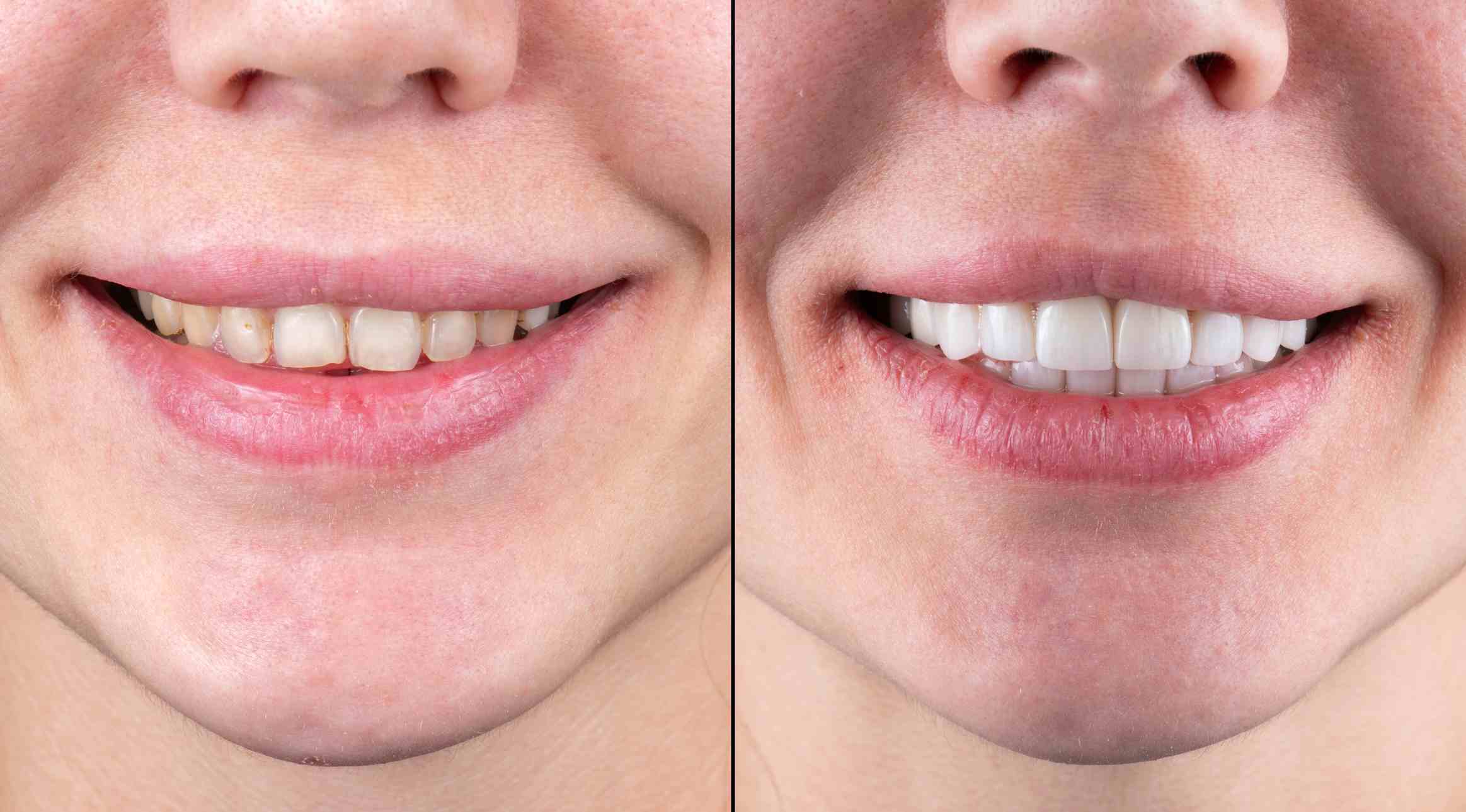Understanding the Differences Between Veneers and Other Treatments
Veneers vs. Dental Bonding and Other Cosmetic Treatments
Choosing the right cosmetic dental treatment can be difficult when dealing with chipped, discolored, or misshapen teeth. With several options available, understanding the differences between veneers and other cosmetic treatments is crucial for making an informed decision about your smile. If you’re considering cosmetic dentistry in Creve Coeur, MO, our team at Creve Coeur Dental will help you decide on the right treatment to improve your confidence and oral health. Below, we’ll help you understand the key differences between veneers and other cosmetic treatments to determine which approach best suits your specific needs and budget.
What Are Veneers?
Veneers are ultra-thin shells, typically measuring 0.5 to 0.7 millimeters thick, that are custom-made to fit over the front surface of your teeth. These wafer-thin coverings are crafted from high-quality dental porcelain, closely mimicking tooth enamel’s natural translucency and appearance. Veneers are particularly effective for treating teeth that are severely discolored, chipped, worn down, or slightly misaligned. They can also close small gaps between teeth and create a more uniform smile.
The veneer process typically requires two or three dental visits. During your first appointment, a small amount of enamel will be removed from the front of your teeth to accommodate the thickness of the veneers. This preparation is usually minimal but permanent. Temporary veneers may be placed while your custom veneers are being fabricated in a dental laboratory. Once your permanent veneers are ready, they’ll be carefully bonded to your teeth using a special dental cement. The result is a natural-looking solution that can address multiple cosmetic concerns simultaneously.

Differences Between Veneers and Other Cosmetic Treatments
While dental veneers are a versatile and popular choice, they differ from other cosmetic dental treatments in several key ways. Here’s how veneers differ from other cosmetic treatments:
Veneers vs. Bonding
The difference between veneers and bonding lies primarily in materials, durability, and application methods. Dental bonding uses a tooth-colored composite resin that’s applied directly to your tooth and shaped during a single visit. This makes bonding more affordable and quicker than veneers, but the material is less durable and more prone to staining over time.
Veneers vs. Crowns
Crowns cover the entire tooth, while veneers only cover the front surface. We recommend crowns when a tooth has significant structural damage or decay, whereas veneers are purely cosmetic solutions for healthy teeth with aesthetic concerns. The preparation for crowns is more extensive, requiring the removal of tooth structure from all surfaces.
Veneers vs. Whitening
Professional whitening treatments work by bleaching existing tooth enamel to remove stains and discoloration. Whitening is effective for surface stains from coffee, wine, or smoking, but won’t address intrinsic stains (those within the tooth structure) or other cosmetic issues like chips or gaps. Veneers can address multiple cosmetic concerns while providing dramatic color improvement.
Pros and Cons of Veneers
Veneers offer several advantages, making them popular for cosmetic dental work. They’re exceptionally durable, lasting 10-20 years with proper care. Their natural appearance comes from high-quality porcelain that closely mimics tooth enamel, creating seamless results. Unlike natural teeth, porcelain veneers resist staining from coffee, wine, and other common culprits. In addition, they require minimal maintenance beyond regular brushing, flossing, and routine dental checkups.
Veneers also come with a few notable disadvantages. They’re a significant financial investment, often costing more than other cosmetic treatments. The process is irreversible, as enamel removal is permanent, meaning ongoing restoration will always be needed for those teeth. Some patients may also experience temporary sensitivity after placement, though this typically resolves quickly.
When to Choose Veneers
Veneers are ideal candidates for several specific situations. Consider veneers if you have severe tooth discoloration that doesn’t respond to professional whitening treatments. This includes intrinsic stains from medications, fluorosis, or root canal treatment that have darkened teeth from within. Veneers for chipped teeth work exceptionally well when the chips are significant or multiple teeth are affected. Also, veneers are excellent for addressing multiple cosmetic concerns simultaneously. If you’re dealing with a combination of discoloration, minor spacing issues, and worn or chipped teeth, veneers can provide a comprehensive solution in fewer treatment sessions than addressing each issue separately.
Frequently Asked Questions About Veneers and Other Treatments
How long do veneers last compared to bonding?
Veneers typically last 10 to 20 years, while dental bonding usually needs replacement every three to seven years. This longer lifespan often makes veneers more cost-effective over time despite their higher initial investment.
Can veneers fix crooked teeth?
Veneers can address minor alignment issues and create the appearance of straighter teeth. However, they can’t correct significant orthodontic problems, which would require braces or clear aligners followed by cosmetic treatment if desired.
Is the veneer process painful?
Most patients experience minimal discomfort during veneer placement. Local anesthesia is used during tooth preparation and any post-treatment sensitivity is typically mild and temporary.
How much enamel is removed for veneers?
Typically, only 0.5 to 0.7 millimeters of enamel is removed from the front surface of teeth, which is roughly equivalent to the thickness of a fingernail. This minimal removal preserves most of your natural tooth structure.
Can I get veneers on just one tooth?
Yes, single veneers are possible and often used to repair one damaged tooth. However, matching the color and appearance to surrounding natural teeth can be challenging, and multiple veneers often provide better aesthetic results.
Unlock Your Best Smile With the Right Treatment
Choosing between veneers, dental bonding, and other cosmetic treatments depends on your needs, budget, and aesthetic goals. While veneers offer superior durability and natural appearance, bonding provides a more conservative and affordable option for minor improvements. The best approach is to consult with an experienced dentist who can evaluate your situation and recommend appropriate treatment. If you’re looking for a solution to achieve a radiant smile, contact us today. We’ll help you explore all available options and create a personalized plan tailored to your preferences.
